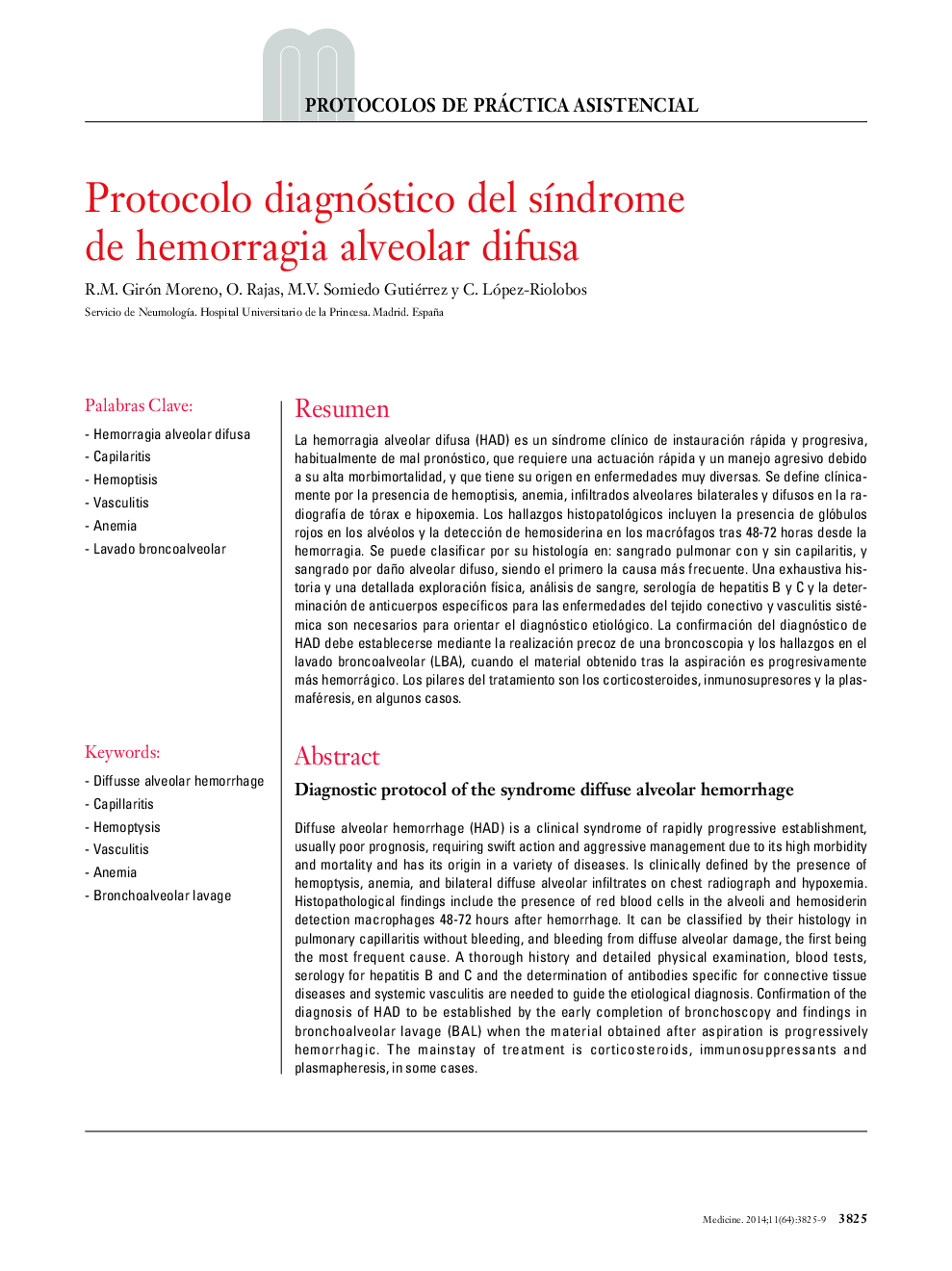| Article ID | Journal | Published Year | Pages | File Type |
|---|---|---|---|---|
| 3808484 | Medicine - Programa de Formación Médica Continuada Acreditado | 2014 | 5 Pages |
Abstract
Diffuse alveolar hemorrhage (HAD) is a clinical syndrome of rapidly progressive establishment, usually poor prognosis, requiring swift action and aggressive management due to its high morbidity and mortality and has its origin in a variety of diseases. Is clinically defined by the presence of hemoptysis, anemia, and bilateral diffuse alveolar infiltrates on chest radiograph and hypoxemia. Histopathological findings include the presence of red blood cells in the alveoli and hemosiderin detection macrophages 48-72 hours after hemorrhage. It can be classified by their histology in pulmonary capillaritis without bleeding, and bleeding from diffuse alveolar damage, the first being the most frequent cause. A thorough history and detailed physical examination, blood tests, serology for hepatitis B and C and the determination of antibodies specific for connective tissue diseases and systemic vasculitis are needed to guide the etiological diagnosis. Confirmation of the diagnosis of HAD to be established by the early completion of bronchoscopy and findings in bronchoalveolar lavage (BAL) when the material obtained after aspiration is progressively hemorrhagic. The mainstay of treatment is corticosteroids, immunosuppressants and plasmapheresis, in some cases.
Keywords
Related Topics
Health Sciences
Medicine and Dentistry
Medicine and Dentistry (General)
Authors
R.M. Girón Moreno, O. Rajas, M.V. Somiedo Gutiérrez, C. López-Riolobos,
